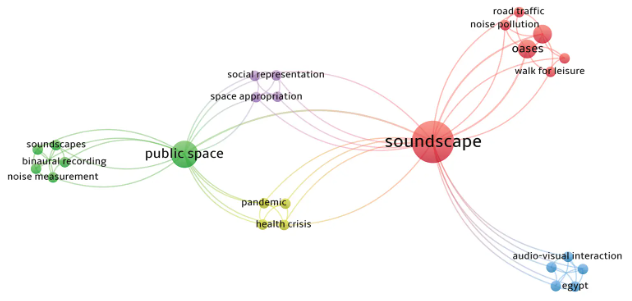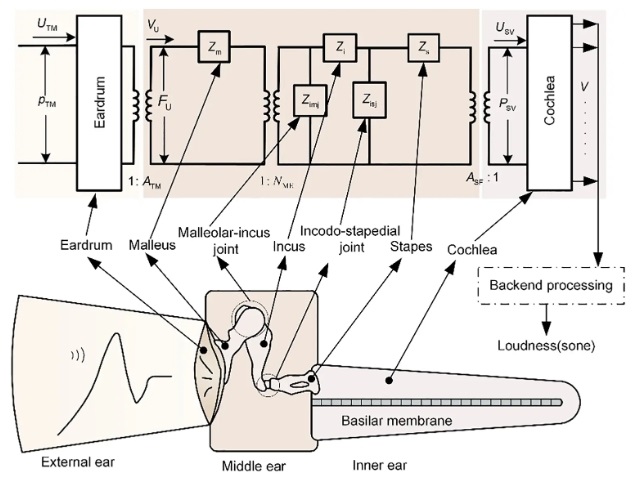Adapting music education to the new normal: Integrative teaching strategies from a global perspective
Abstract
This study explores how music education can innovate through various integrative teaching strategies in the global “new normal”. Challenges and opportunities are identified. It highlights the need for educational reform and strengthening cultural identity in the post-pandemic world. By comparing global music education models, the positive role of cultural exchange in fostering diversity is examined. Based on the experimental findings, the study introduces “integrative teaching”, focusing on student-centered methods and interdisciplinary approaches. The experiment results show that integrating music with technology, language arts, and environmental science can enhance creativity, cultural understanding, and environmental awareness. In addition, practical examples are listed to demonstrate the effective use of virtual tools in addressing ecological issues through music creation. The study also underscores the importance of school-community collaboration and highlights successful case studies from Asia, Europe, and the U.S. How interdisciplinary strategies improve student learning outcomes are determined. More importantly, an evaluation framework focusing on diversified feedback and personalized assessments is established, proving that continuous feedback can enhance student engagement.
References
[1]Xing N. Discussion on the path of corporate legal risk management from the perspective of the new normal. Legality Vision. 2023; (14), 157–159.
[2]Li Y. Exploration of elementary English picture book teaching strategies from the perspective of in-class and extracurricular integration. Love Science Education Frontier. 2023; (03), 188–190.
[3]Zhang S. Research on the effectiveness of China’s central bank’s monetary policy under the new normal—Based on the perspective of economic growth. Productivity Research. 2021; (10), 127–131+161.
[4]Guo J. China’s monetary policy under the “new normal.” Marketing Circles. 2021; (04), 38–39.
[5]Luo S, Yang J, and Xu Q. A brief discussion on “streamlining administration and delegating power” under the new normal. Legality and Society. 2021; (19), 98–99.
[6]Zhang X. A survival guide for enterprises under the new normal of the pandemic. Chinese and Foreign Corporate Culture. 2022; (08), 5–8.
[7]Su W. Discussion on countermeasures for the integration of information technology in coal enterprises under the new normal. Modern Industrial Economy and Informationization. 2022; 12(10), 53–54.
[8]Huang L. Exploration of junior high school Chinese teaching strategies from the perspective of “reading-writing integration.” Chinese Excerpts Teacher’s Edition. 2023; (12), 112–114.
[9]Shi F. Network and security integration under the new normal of the pandemic. China Informatization. 2021; (05), 82–83.
[10]Dan Z. Reflections on the integration of production and education in higher vocational education under the new normal. Scientific Consulting Science & Management. 2021; (03), 188–189.
[11]Du T. Acceleration of civil aviation mixed reform under the new normal. Big Aircraft. 2021; (01), 18–23.
[12]Wu S, and Hu Y. Integration and win-win: A study on the adaptability of cloud accounting models for small and medium enterprises from the perspective of social adaptation theory. Modern Business. 2021; (18), 190–192.
[13]Ye T, Zhao Y, Wang X, Ling Y, Jiang G, and Wang H. Research on social adaptability from a health perspective. Chinese Journal of Social Medicine. 2023; 40(01), 24–26.
[14]Li K, and Wang J. Interactive teaching strategies under the concept of integrative music classrooms. Music World. 2021; (09), 10–13+5.
[15]Jiang W, and Bu L. Integration of practicality and aesthetics in elementary music education under the “double reduction” policy. New Curriculum Teaching Electronic Edition. 2023; (18), 100–102.
[16]Li M. Circular economy of financial debt credit payment chains under the new normal. China Collective Economy. 2021; (05), 103–104.
[17]Fu L. High-temperature heat waves may become the new normal under the background of global warming. Science and Technology Daily. 2022; (002).
[18]Du Q. Research on the integration mechanism of vocational education and production under the new normal. Occupation. 2021; (11), 32–33.
[19]Kadeer Y. Deepening the integration of vocational technical school dance teaching with production and education under the new normal. In Exploring Curriculum and Teaching Reform under the “Double Reduction” Policy, 13th ed. New Curriculum Research Journal. 2022; 121–122.
[20]Sun Y, and Ding H. Research and practice of constructing the “new normal” of online teaching from the perspective of “golden courses.” Modern Business and Trade Industry. 2022; 43(15), 213–215.
[21]Wang H. Discussion on the new form of intelligent labor education from the perspective of disciplinary integration. Middle School Biology Teaching. 2022; (31), 17–20.
[22]Cai Y. Research on the path and strategies of vocational education’s proactive adaptation to the economic new normal under the “Internet Plus” concept. Journal of Beijing Institute of Graphic Communication. 2021; 29(10), 104–106.
[23]Huang F. Research on the reform of basic music education from the perspective of core literacy. In Proceedings of the Third National Education and Teaching Seminar. Chengdu Tao Xingzhi Research Association. 2022; 32–36.
[24]Li Y, Liu Z, Guo M, and Gu X. High-temperature heat waves will become the new normal under the background of global warming. China Meteorological News. 2022; (001).
[25]Wang G. Practical design of teaching strategies for “high school mathematics teaching design” under the new normal. Mathematics Learning and Research. 2022; (33), 26–28.
[26]Liu J. Integration and development of science and technology journals and short videos under the new normal. Technology and Innovation Management. 2021; 42(05), 601–606.
[27]Chen B. Some discussions on ideological and political education of college students under the new normal. Food Research and Development. 2022; 43(23), 239–240.
[28]Smith A. Adapting music education to digital transformation: Strategies and challenges. International Journal of Music Education Research. 2024; (25), 123–135.
[29]Johnson B. Cross-cultural music education in the post-pandemic era: Opportunities and dilemmas. Global Music Education Review. 2024; (18), 89–102.
[30]Brown C. Integrative teaching methods in music education: A case study from Europe. European Journal of Music Education. 2024; (22), 78–91.
[31]Davis D. Technological innovation in music education: Impact on student creativity and engagement. Journal of Music Technology Education. 2024; (20), 156–170.
[32]Wilson E. School-community collaboration in music education: Successful models from around the world. International Journal of Community Music. 2024; (23), 211–225.
Copyright (c) 2024 Yuchen Guo

This work is licensed under a Creative Commons Attribution 4.0 International License.









